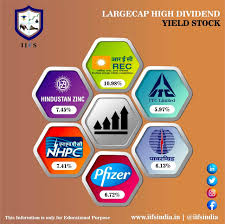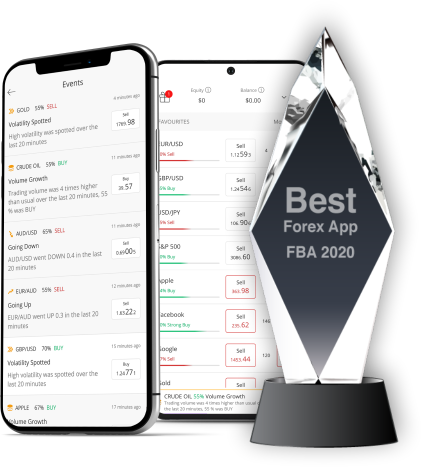
A foreign exchange swap, also called FX Swap or forex swap, is a simultaneous purchase and sale a currency. The use of foreign derivatives can also be involved. You can gain exposure to different currency pair options, which can lead to a range of benefits. Here are some examples.
Foreign exchange swap
A foreign swap (sometimes called FX Swap, Forex Swap, or FX Swap) is a financial transaction, in which one country’s currency is exchanged to another. To facilitate the transaction, foreign exchange derivatives can be used. It is a popular way to trade currencies. But it can also be dangerous.
Currency swaps are used by companies to hedge their risk. They can borrow currency in one country and sell it in another at a higher rate, and then swap the currency at a later date. This is especially beneficial for companies that use different currencies or who wish to borrow large amounts with no currency fluctuations.

Foreign exchange basis swap
Foreign exchange basis swap is a derivative contract between two currencies. Basis points measure the interest rate for the swap. One basis point equals 0.01%. In 2008, when Lehman collapsed, the swap rate was below -1.2%. Since then, swap rates have fluctuated. The swap amount is equal in value to the spot rate of the currencies.
A basis swap allows banks to convert a dollar liability into a euro liability. This allows the bank borrow more easily in the Euro currency.
Overnight swap
FX traders may take advantage of the currency pair's overnight interest rate differential. A currency pair that has a high positive interest rate differential may remain favorable for a long period of time. Leverage can be used by traders with a broker to obtain a high rate of interest on overnight swaps. You can also open two separate accounts to hedge your positive interest rates with different brokers.
Unlike a conventional short-term loan, an FX overnight swap is relatively risk-free. Because the swapped amount serves as collateral, there is no default risk involved. A cross-currency Swap is slightly more risky. Default risk occurs when the counterparty does not meet its interest payments or a lump sum payment at the maturity date.

Currency swap with the central bank
A currency swap involves a transaction in the which a central bank from one country provides liquidity to the central banking of another. This arrangement is also called a central bank liquidity Swap. The purpose of a currency swap is to make it easier for a central bank in one country to purchase currency in another country.
Currency swaps may be a great option to help support another currency. In addition to helping stabilize currencies, they can help prevent the devaluation of their home currencies. To conduct a currency exchange, a central bank must have authority to swap currencies.
FAQ
What is a bond?
A bond agreement between two people where money is transferred to purchase goods or services. It is also known as a contract.
A bond is typically written on paper, signed by both parties. This document details the date, amount owed, interest rates, and other pertinent information.
When there are risks involved, like a company going bankrupt or a person breaking a promise, the bond is used.
Bonds can often be combined with other loans such as mortgages. This means that the borrower has to pay the loan back plus any interest.
Bonds are used to raise capital for large-scale projects like hospitals, bridges, roads, etc.
It becomes due once a bond matures. That means the owner of the bond gets paid back the principal sum plus any interest.
If a bond does not get paid back, then the lender loses its money.
Who can trade on the stock market?
The answer is everyone. Not all people are created equal. Some people are more skilled and knowledgeable than others. They should be rewarded for what they do.
There are many factors that determine whether someone succeeds, or fails, in trading stocks. You won't be able make any decisions based upon financial reports if you don’t know how to read them.
Learn how to read these reports. You must understand what each number represents. Also, you need to understand the meaning of each number.
You will be able spot trends and patterns within the data. This will assist you in deciding when to buy or sell shares.
This could lead to you becoming wealthy if you're fortunate enough.
How does the stockmarket work?
By buying shares of stock, you're purchasing ownership rights in a part of the company. A shareholder has certain rights. He/she may vote on major policies or resolutions. The company can be sued for damages. He/she may also sue for breach of contract.
A company cannot issue shares that are greater than its total assets minus its liabilities. It is known as capital adequacy.
Companies with high capital adequacy rates are considered safe. Companies with low capital adequacy ratios are considered risky investments.
How can I select a reliable investment company?
You want one that has competitive fees, good management, and a broad portfolio. The type of security that is held in your account usually determines the fee. Some companies don't charge fees to hold cash, while others charge a flat annual fee regardless of the amount that you deposit. Others charge a percentage of your total assets.
Also, find out about their past performance records. Poor track records may mean that a company is not suitable for you. You want to avoid companies with low net asset value (NAV) and those with very volatile NAVs.
Finally, it is important to review their investment philosophy. Investment companies should be prepared to take on more risk in order to earn higher returns. They may not be able meet your expectations if they refuse to take risks.
Statistics
- Our focus on Main Street investors reflects the fact that American households own $38 trillion worth of equities, more than 59 percent of the U.S. equity market either directly or indirectly through mutual funds, retirement accounts, and other investments. (sec.gov)
- Ratchet down that 10% if you don't yet have a healthy emergency fund and 10% to 15% of your income funneled into a retirement savings account. (nerdwallet.com)
- The S&P 500 has grown about 10.5% per year since its establishment in the 1920s. (investopedia.com)
- US resident who opens a new IBKR Pro individual or joint account receives a 0.25% rate reduction on margin loans. (nerdwallet.com)
External Links
How To
How to invest in the stock market online
You can make money by investing in stocks. There are many options for investing in stocks, such as mutual funds, exchange traded funds (ETFs), and hedge funds. Your investment strategy will depend on your financial goals, risk tolerance, investment style, knowledge of the market, and overall market knowledge.
Understanding the market is key to success in the stock market. Understanding the market, its risks and potential rewards, is key. Once you understand your goals for your portfolio, you can look into which investment type would be best.
There are three main categories of investments: equity, fixed income, and alternatives. Equity refers a company's ownership shares. Fixed income is debt instruments like bonds or treasury bills. Alternatives are commodities, real estate, private capital, and venture capital. Each category comes with its own pros, and you have to choose which one you like best.
You have two options once you decide what type of investment is right for you. The first is "buy and keep." This means that you buy a certain amount of security and then you hold it for a set period of time. Diversification is the second strategy. It involves purchasing securities from multiple classes. If you purchased 10% of Apple or Microsoft, and General Motors respectively, you could diversify your portfolio into three different industries. Multiplying your investments will give you more exposure to many sectors of the economy. You are able to shield yourself from losses in one sector by continuing to own an investment in another.
Risk management is another important factor in choosing an investment. You can control the volatility of your portfolio through risk management. A low-risk fund could be a good option if you are willing to accept a 1% chance. If you are willing and able to accept a 5%-risk, you can choose a more risky fund.
Learn how to manage money to be a successful investor. A plan is essential to managing your money. A good plan should cover your short-term goals, medium-term goals, long-term goals, and retirement planning. You must stick to your plan. You shouldn't be distracted by market fluctuations. You will watch your wealth grow if your plan is followed.